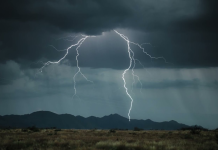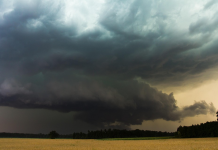A powerful solar event, such as a major solar flare or coronal mass ejection (CME), can trigger geomagnetic storms that disrupt Earth’s magnetic field, inducing currents in power grids, satellites, and communication systems. These events, like the 1859 Carrington Event — the strongest on record — could today cause widespread blackouts, satellite failures, GPS degradation, and economic losses in the trillions of dollars if unprepared. With Solar Cycle 25 peaking around 2025, the risk of such storms increases, though the probability of a Carrington-level event in the next decade is estimated at 2-12% or up to 25% by some models.
Current Monitoring and Warning Systems
Global preparedness has advanced significantly through space weather forecasting. Agencies like NOAA’s Space Weather Prediction Center (SWPC) and NASA provide real-time alerts, predicting storm arrivals hours to days in advance, allowing operators to mitigate risks such as by maneuvering satellites or adjusting power grids.
For instance:
-
- SWPC issues G-scale alerts (G1 minor to G5 extreme) for geomagnetic storms, directly supporting North American grid operators to prevent damage from induced currents.
- International efforts, including the ITU and ESA, emphasize resilient infrastructure, with radiation-resistant satellites and grid protections blocking geomagnetic currents.
- Research at institutions like the University of Florida and University of Hawaiʻi is enhancing forecasts using AI and particle measurements to better prepare for the 2025 solar maximum.
Countries like New Zealand are noted for leading in preparedness, with robust grid protections and emergency protocols. The EU has highlighted solar storms as an emerging challenge, advocating for better coordination.
Infrastructure Mitigation Measures
-
- Power Grids: Some regions, like Quebec after the 1989 blackout, have invested billions in hardening transformers and adding surge protectors. In the US, utilities are implementing precautions, though often designed for milder storms rather than extreme ones. Grids can be temporarily shut down (up to 6 days in NZ) to safeguard equipment.
- Satellites and Aviation: Operators use forecasts to reposition satellites or reroute flights to avoid radiation spikes. Modern designs include better shielding, reducing vulnerability compared to past events.
- Communications and GPS: Backup systems and diversified networks help, but high-frequency radio blackouts remain a risk, especially on Earth’s nightside.
- Individual and Community Prep: Recommendations include stocking water, non-perishable food, NOAA weather radios, flashlights, and portable power sources like solar chargers or generators. Community initiatives, such as solar-powered shelters in vulnerable areas, enhance local resilience.
Recent events, like the May 2024 G5 storm, tested these measures with minimal widespread disruption, showing progress in resilience.
Gaps and Challenges
Despite advancements, preparedness is uneven. A May 2025 US tabletop exercise by Johns Hopkins APL revealed major weaknesses in response coordination across government and industry levels. Experts warn that a Carrington-level storm could cause years-long outages, with recovery taking up to a decade and costing trillions. Small electronics like phones and cars are likely safe, but large-scale grids and transformers remain vulnerable without full retrofitting.
Public awareness is growing, with resources like checklists and educational programs, but broader investments in solar science and infrastructure hardening are needed to close gaps. As of September 2025, while monitoring is strong, full readiness for the most extreme scenarios lags, emphasizing the need for ongoing global collaboration.






